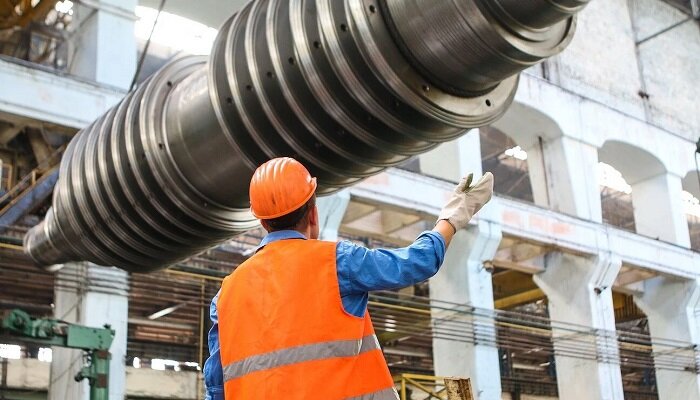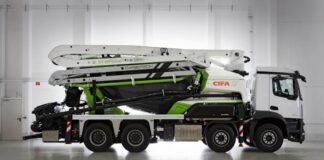Finding creative lifting solutions has been crucial in the construction industry since the inception of the first structures. It is a fundamental aspect of ensuring the success of any construction project. In today’s construction industry, the use of hefty equipment and sophisticated structures of large scale has become crucial. This emphasises the need for professionals to stay updated on the various methods and innovations available for lifting materials efficiently and safely at every stage of a project’s development.
Understanding the importance of accurate lifting solutions is crucial in the sector. It can greatly impact the success and profitability of an idea.
Benefits associated with lifting solutions
The use of heavy machinery is necessary in construction projects for efficient material handling and task completion. The roll-out of chain technology in lifting solutions has transformed construction projects. It allows for the secure and effective handling of heavy materials, leading to reduced labour intensity, increased productivity, and a substantial reduction in potential workplace accidents.
Contractors can improve efficiency, productivity, and workplace safety by using innovative lifting solutions like material hoists and aerial work platforms. In addition, lifting solutions offer not just time and cost savings but also a sustainable and secure option for construction companies globally. If one is involved in the construction industry, it is important to familiarise with the advantages of applying lifting solutions. By doing so, one can enhance the progress and success of projects.
Various types of lifting gear
Cranes are widely used in construction as one of the most prevalent kinds of lifting equipment. These machines are highly adaptable and capable of handling heavy loads, making them an ideal option for efficiently transferring building materials between different locations. Forklifts are another commonly used type of lifting equipment that are highly effective for efficiently moving smaller objects around construction sites. Telehandlers, equipped with extendable arms, happen to be valuable tools for accessing elevated areas that cranes and forklifts cannot reach. Their capacity to navigate difficult landscapes makes them an invaluable asset on any construction site. Likewise, hoists and lifts play a crucial role in construction projects by providing a safe and efficient way of vertically transporting workers and materials. Lifting remedies are constantly being developed and improved to offer reliable, secure, and cost-effective solutions for the challenges encountered in today’s construction sector.
Safety advantages associated with using high-quality lifting equipment
Safety happens to be an essential factor on every construction site, and the use of high-quality lifting equipment plays a significant role in making sure it is maintained. Using reliable lifting gear is essential for safely handling materials and minimising the potential for mishaps caused by falling objects. Additionally, it provides protection for workers against injuries that may arise from manually carrying heavy loads. In addition, lifting equipment of high quality adheres to safety standards and guidelines, offering an additional level of trust for the construction crew. The training provided to operators is equally important. When paired with advanced lifting solutions, it creates a work environment that is both safer and more productive.
Cost-Efficiency of Localised & Automated Lifting Systems across Construction Projects
The implementation of localised and automated lifting systems in construction projects offers numerous benefits. These systems not only simplify operations but also greatly improve cost efficiency and also help minimise the need for manual labour, which in turn decreases costs related to recruiting and educating personnel. Automation also helps to decrease the likelihood of human error, which in turn reduces the likelihood of costly delays. In addition, localised systems result in reduced transportation needs for equipment and supplies, resulting in additional cost savings.
The convenience of portable and durable lifting solutions
Construction projects benefit greatly from the use of portable and durable lifting solutions, as they provide unparalleled convenience. Portable lifting equipment, like mobile cranes or forklifts, provides the advantage of easy mobility within a construction site. This allows for flexibility in allocating resources to areas where they are most needed. Equipment that is durable and built to endure the harsh conditions commonly encountered at construction sites is essential for ensuring durability and reliable operation. This helps to minimise the demand for frequent replacements, resulting in time and cost savings. Portable and durable lifting solutions greatly enhance the efficiency of operations and overall productivity in construction projects.
Mobile platforms have the ability to greatly enhance productivity
Technology is commonly used on construction sites, and mobile platforms have become a crucial tool in the industry. They provide the benefits of real-time communication, improved efficiency, and increased productivity. These applications not only provide essential information such as blueprints and schedules, but they also enable efficient and dependable data exchange between workers as well as project managers.
The impact of new technologies on modern crane operators
It is not surprising that modern crane operators benefit from the continuous advancements in technology. New technologies have changed crane operations, enhancing safety and efficiency like never before. With the introduction of automated security features and real-time monitoring, crane operators can now rely on advanced tools to ensure a secure as well as productive working environment. One example of such technology is the utilisation of remote operation systems. These systems allow crane operators to securely operate their machines from a distance. Additionally, the integration of sensors and cameras can enhance the crane’s capabilities by enabling real-time monitoring of its functions.
This approach not only minimises the potential for incidents but also enhances overall safety measures. Other advancements involve load-sensing technology, anti-collision systems, and advanced control systems. The future of crane operation will undoubtedly rely on these technologies as the demand for improved safety and efficiency increases.




































